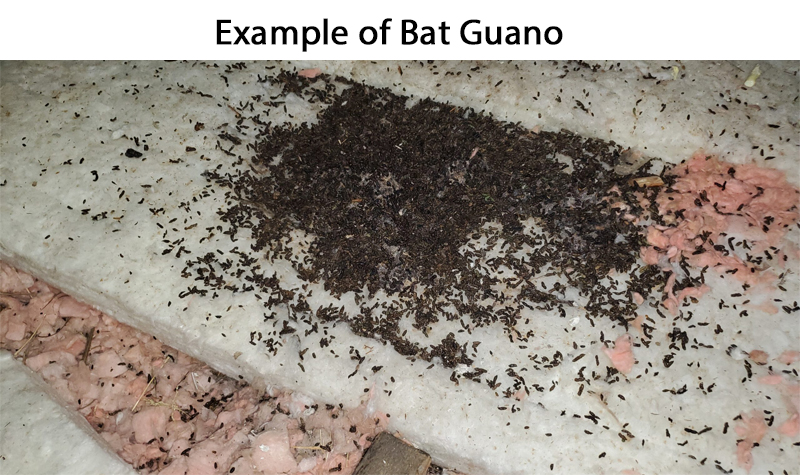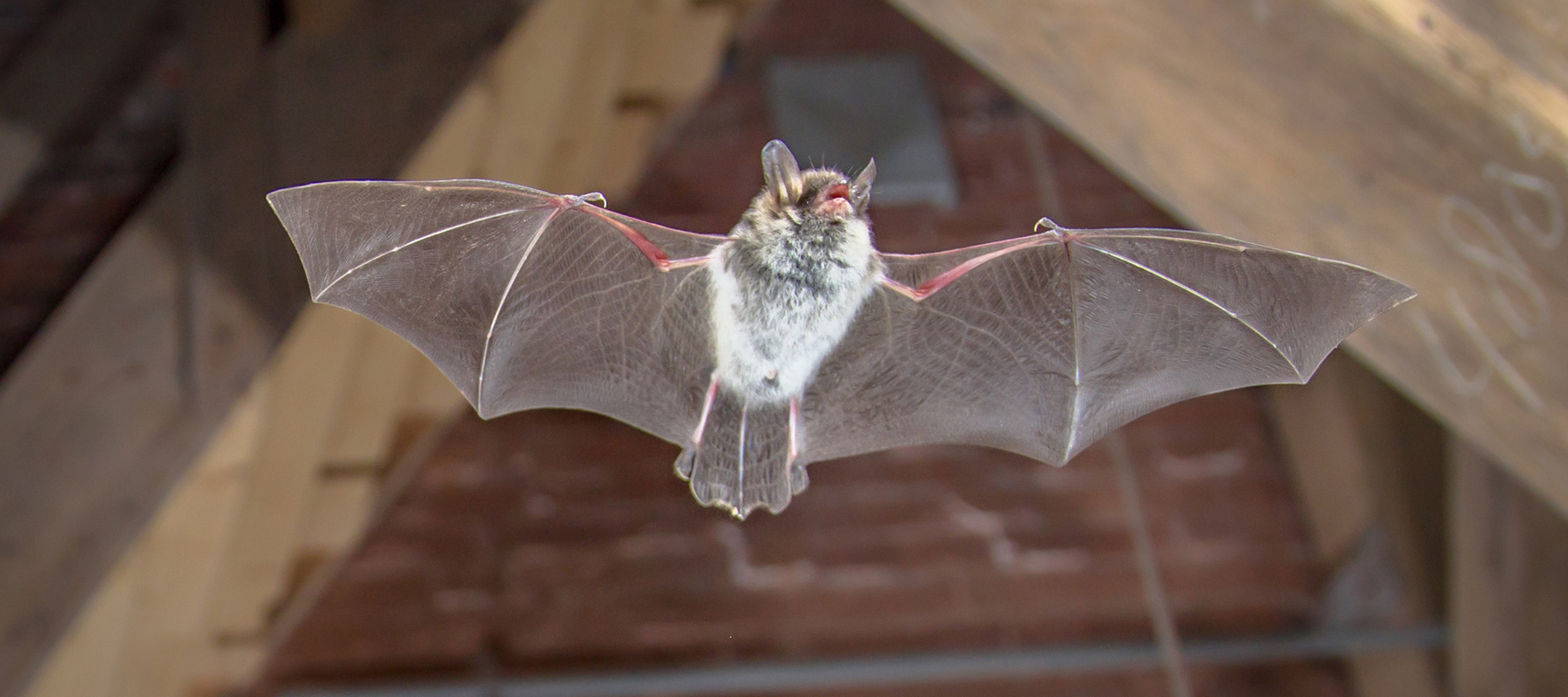Bat Exclusion Made Simple: Pricing, Process and Health Risks
Last Updated: November 13, 2023

Fact Checked By: Ryan Maguire
On This Page
Other than startling you, a single bat that gets trapped inside of the house doesn't pose much of a problem.
But where there's one bat there's often others and a bat colony can be problematic indeed. Bats carry rabies, ticks, mites, and bacteria and their guano (droppings) can cause a respiratory disease called histoplasmosis. Bat extermination is illegal in most states and trapping and releasing is ineffective, as bats are known to return to nesting sites as far as 150 miles away.
To get rid of bats you need a specialized pro to perform bat exclusion.
Bat Removal Average Costs #
Initial Inspection:
- $75 - $150 for a pest control professional to inspect the home, find how the bat entered, and advise on removal options.
Removal Services:
$200 - $600 for bat removal and exclusion services. This covers removing and safely relocating any roosting bats found inside the home.
Exclusion work such as sealing entry points, installing one-way exclusion devices, and repairing any damage caused by bats accessing the home will cost extra. Simple repairs around $200-300, more extensive repairs $500+.
Additional Services:
$50 - $100 for a post-removal inspection to confirm all bats and means of entry have been sealed.
$300 - $900 for bat guano removal if there is heavy buildup. Includes protective gear and special equipment.
$1,500+ for bat colony removal from attics/walls if infestation is severe. May involve special equipment.
Other Costs:
- Rabies post-exposure shots if humans or pets were exposed, around $3,000 - $7,000.
So in total, for minor bat removal and exclusion services expect to pay $400 - $1,000+ in most cases. Severe infestations or guano removal can cost $2,000+. Post-exposure rabies treatment adds significantly to costs.
What to Expect From Bat Exclusion #
Here are the typical steps an exterminator will take to remove bats:
Inspect the home to find all possible entry points the bats are using. Attics, chimneys, roof vents, and openings around windows or doors are common.
Seal up most entry points except 1-2 main ones. This "funnels" the bats out through those points.
At night when bats are active, install one-way exclusion devices over those remaining entry points. These allow bats to leave but not re-enter.
Monitor the exclusion devices at dusk to allow any bats inside to leave, while preventing more from entering. Devices are left in place for 5-7 days.
Once it's confirmed all bats have exited and not returned, the final entry points are permanently sealed shut with materials like caulk, foam, hardware cloth, or steel wool.
Make repairs to close up any structural openings, gaps, or damage that facilitated entry.
Thoroughly clean and disinfect areas of the home contaminated with bat urine or droppings using chemicals, HEPA vacuums, etc. May involve guano removal.
Perform post-removal inspection in 1-2 weeks to confirm successful exclusion and no remaining signs of infestation.
This combination of funneling bats out through one-way devices, sealing entry points, and sanitizing affected areas allows for permanent humane eviction. Monitoring ensures no bats become trapped inside.
A single bat that flies into your home accidentally can be safely captured and released without professional help. Bat Conservation International (batcon.org explains how to remove a bat from your house. The site also provides information on DIY bat exclusion and other topics related to bats in buildings.
Bat Removal Real Life Cost Examples #
$600 - I had a couple bats that got into my attic in Missouri. A pest control guy came out, found how they were getting in through a gap in the siding, did a one-way exclusion, sealed up the gap, and cleaned any guano. Took about 3 hours total.
$900 - A small colony of bats had made a home in the soffits of my Arizona home. Exterminator removed them humanely over a week, fully sealed the soffits, sanitized attic space, and did follow up checks for any stragglers. Worth the price for a bat-free home!
$1,300 - I had a major bat problem in my large Virginia house's attic/chimney. Exterminator had to do major exclusions across roofline, tear out sections of ceiling to access spaces, extract guano, disinfect, seal it back up and repair exterior gaps. Not cheap but worked.
$850 - Removed a medium-sized colony living in walls of our old colonial Massachusetts home. Installer carefully routed them all out via one-way devices, secured the home fully, did air purification treatments after. Money well spent.
$475 - Just 3 or 4 bats had made way into our chimney in Pennsylvania. Guy inserted chimney cap, sealed up access point with cement, confirmed removal after a week. Pretty quick fix overall.
Signs of Bat Guano in Your Home #
Here are some signs that may indicate the presence of bat guano in or around your home:
Dry, dark brown or black granular droppings in attics, soffits, porches, or anywhere bats may access. Guano quickly accumulates in colonies.
An ammonia-like odor coming from accumulated guano. The urine component causes an unpleasant, strong smell.
Staining or discoloration on ceilings, walls, or floors underneath roosting areas. Bat urine can leave behind an ugly residue.
Noise from bats heard at night, especially scratching or squeaking noises in walls, chimneys, or attics.
Bats exiting the home at dusk to forage, visibility flying out of openings.
Rodent feces tend to be more solid and clumped while bat guano is looser, finer, and powdery when dry.
Guano particles sticking to areas where bats frequently roost or fly. Ridges, rafters, windowsills, etc may have guano debris.
Remnants of insects like moth wings around the droppings, which bats feed on.
If you notice any of these warning signs, it's best to contact a professional to inspect for bat activity, remove guano properly, and exclude the bats humanely. Bat guano can spread diseases.

Health Risks of Bat Guano #
*Histoplasmosis* - Bat guano can contain spores of the Histoplasma capsulatum fungus. When guano is disturbed, spores become airborne and can cause lung infections if inhaled, especially for those with weakened immune systems.
Rabies - While rare, bat guano samples have sometimes tested positive for rabies virus. Direct contact should be avoided.
E. Coli & Salmonella - Bat droppings can harbor E. Coli, Salmonella, and other bacteria that cause gastrointestinal illness.
Leptospirosis - Bat urine can transmit Leptospirosis bacteria which can lead to fever, headaches, chills, vomiting, and liver/kidney damage in humans.
Methicillin-Resistant Staphylococcus Aureus (MRSA) - Recent studies have detected the antibiotic-resistant MRSA bacteria in some bat guano samples.
Cryptococcus - Cryptococcus neoformans fungus found in guano can cause serious lung and brain infections.
Asthma Trigger - Ammonia and other gases released from guano accumulations can trigger asthma attacks.
Tetanus - Caused by Clostridium tetani bacterium which has been found in some bat guano.
To avoid health issues, proper protective gear like masks and gloves should be used when handling or cleaning near bat droppings. Professional guano removal is highly recommended. Bat guano should never be taken lightly as an exposure risk.
Do Bat Houses Work? #
Installing a bat house can provide an alternative roosting spot and encourage bats to relocate out of buildings, but their effectiveness depends on several factors:
Pros:
Well-designed and properly located bat houses can attract colonies of bats, providing them a suitable habitat. This gives them an appealing area to nest outside of homes.
They offer bats a safe, dedicated space for roosting and raising young versus competing for limited buildings/crevices.
Can reduce reliance of bats on structures, potentially decreasing chances of infestations.
Provides habitat support for beneficial native bats that eat insects.
Cons:
There is no guarantee bats will choose to occupy the artificial housing. Location, design, competition and other elements make adoption unpredictable.
Bats show high roost site fidelity once settled so installed houses may only attract new bats, not redirect existing colonies.
May require experimenting with bat house type, height, sun exposure, etc. to find optimal conditions for attraction.
Can take 1-3 years for bats to fully colonize so requires patience.
Nearby availability of buildings with suitable roosting spaces reduces likelihood of adopting bat houses.
So while bat houses can provide suitable alternative habitat in some cases, they are not a foolproof solution for removing bats from buildings as bats may ignore or be slow to discover them. A targeted exclusion approach is still the most reliable method. But bat houses are worth trying as a deterrent.
